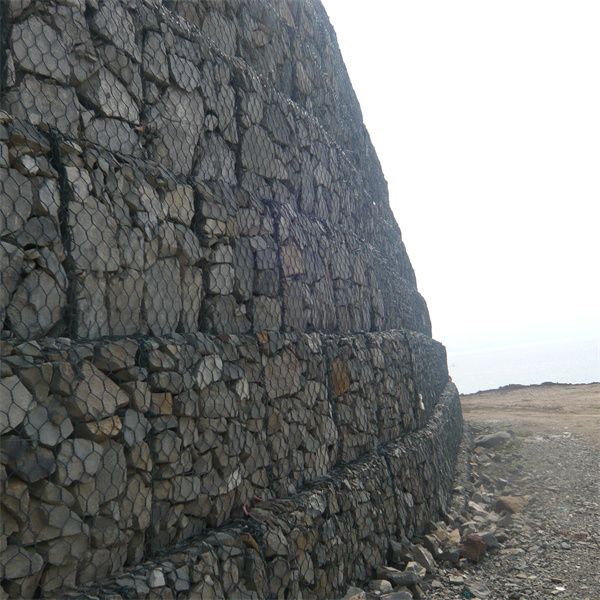дек. . 25, 2024 15:37 Back to list
Welded Wire Gabion Baskets for Versatile Landscaping and Erosion Control Solutions
Welded Gabion Baskets A Modern Solution for Erosion Control and Landscaping
In recent years, the use of welded gabion baskets has surged in popularity, becoming a favored choice among architects, landscapers, and engineers. These robust wire mesh containers filled with stones, rocks, or other materials offer innovative solutions for a variety of applications ranging from erosion control to decorative landscaping. This article explores the features, benefits, applications, and installation techniques of welded gabion baskets.
Understanding Welded Gabion Baskets
Welded gabion baskets are made from high-quality steel wire that has been welded to create a grid-like structure. This welded wire mesh is often coated with a layer of corrosion-resistant material, such as PVC or galvanized zinc, to enhance its durability. The most significant advantage of welded gabion baskets over traditional woven mesh ones is their structural integrity and uniformity. The evenly welded connections ensure that the basket can withstand the pressures exerted by the filled materials and the environmental conditions over time.
Benefits of Welded Gabion Baskets
1. Durability Due to their welded construction and protective coatings, these baskets can withstand harsh environmental conditions, including extreme weather, UV exposure, and corrosion. This durability makes them ideal for long-term installations.
2. Versatility Welded gabion baskets can be used for a wide variety of purposes. From retaining walls and riverbank protection to decorative elements in gardens and parks, their adaptability is one of their key selling points.
3. Aesthetic Appeal While functionality is a primary concern, welded gabion baskets can also enhance the visual aspect of a landscape. By filling these baskets with colorful stones, beach pebbles, or even reclaimed materials, they can fit into various design themes, from rustic to modern.
4. Environmentally Friendly Gabions help manage water runoff, reduce soil erosion, and improve drainage, making them an environmentally friendly choice. They promote vegetation growth while allowing natural materials to blend with the landscape.
5. Cost-Effectiveness Compared to traditional construction materials, welded gabion baskets can represent a more cost-effective solution. They require fewer resources for manufacturing and come with lower maintenance costs over time.
6. Ease of Installation The installation process of welded gabion baskets is relatively straightforward. They can be assembled on site with minimal equipment, making them accessible for both DIY projects and professional installations.
Applications of Welded Gabion Baskets
Welded gabion baskets have found their place in various sectors
welded gabion baskets

- Erosion Control One of the primary uses of gabions is to prevent soil erosion along riverbanks and steep slopes. Their sturdy design allows them to absorb the energy of flowing water, minimizing damage to the landscape.
- Retaining Walls These baskets create strong retaining walls that can support heavy loads and remain structurally sound over time. This is particularly useful for landscaping on slopes or in construction sites where earth retention is necessary.
- Noise Barriers Gabion walls can also function as noise barriers in urban settings. Filled with stones, they absorb sound effectively, reducing noise pollution from busy roads or industrial areas.
- Scenic Landscaping In parks, gardens, and residential areas, welded gabions serve as decorative features. They can create raised beds, planters, or fencing while offering a natural aesthetic that enhances the visual appeal of the area.
Installation Techniques
The installation of welded gabion baskets requires proper planning and execution. It typically involves the following steps
1. Site Preparation Clear the area where the gabion will be installed. Ensure proper drainage by grading the site.
2. Foundation Create a solid base, often using crushed stone or gravel, to provide stability for the gabion structures.
3. Assembly Erect the welded gabion baskets according to the desired configuration. They can be anchored with rebar or connected to other baskets for added stability.
4. Filling Fill the baskets with selected stones, ensuring even distribution to maintain structural integrity. The type and color of stones can be chosen based on aesthetic preferences.
5. Closure After filling, securely close the tops of the baskets. Additional mesh or ties can be used to reinforce the structure.
Conclusion
Welded gabion baskets represent a modern approach to addressing various challenges in landscaping, civil engineering, and environmental protection. Their combination of durability, versatility, and aesthetic appeal makes them an excellent choice for anyone looking to enhance their property while contributing to sustainable practices. As more people become aware of their benefits, the demand for welded gabion baskets is likely to continue growing, paving the way for innovative landscape designs and effective erosion control solutions.
-
Versatility of Chain Link Fence Gabion
NewsMay.13,2025
-
Trusted Gabion Box Suppliers
NewsMay.13,2025
-
PVC Coated Gabion for Long-Lasting Structural Integrity
NewsMay.13,2025
-
Garden Gabion for Stylish
NewsMay.13,2025
-
Galvanized Gabion for Durable Outdoor Structures
NewsMay.13,2025
-
Gabion Box Factory
NewsMay.13,2025
-
Gabion Basket Wire Gauge and Mesh
NewsMay.13,2025






